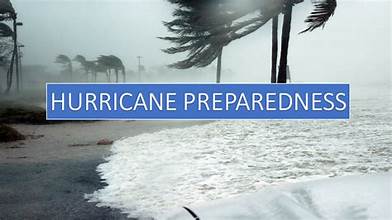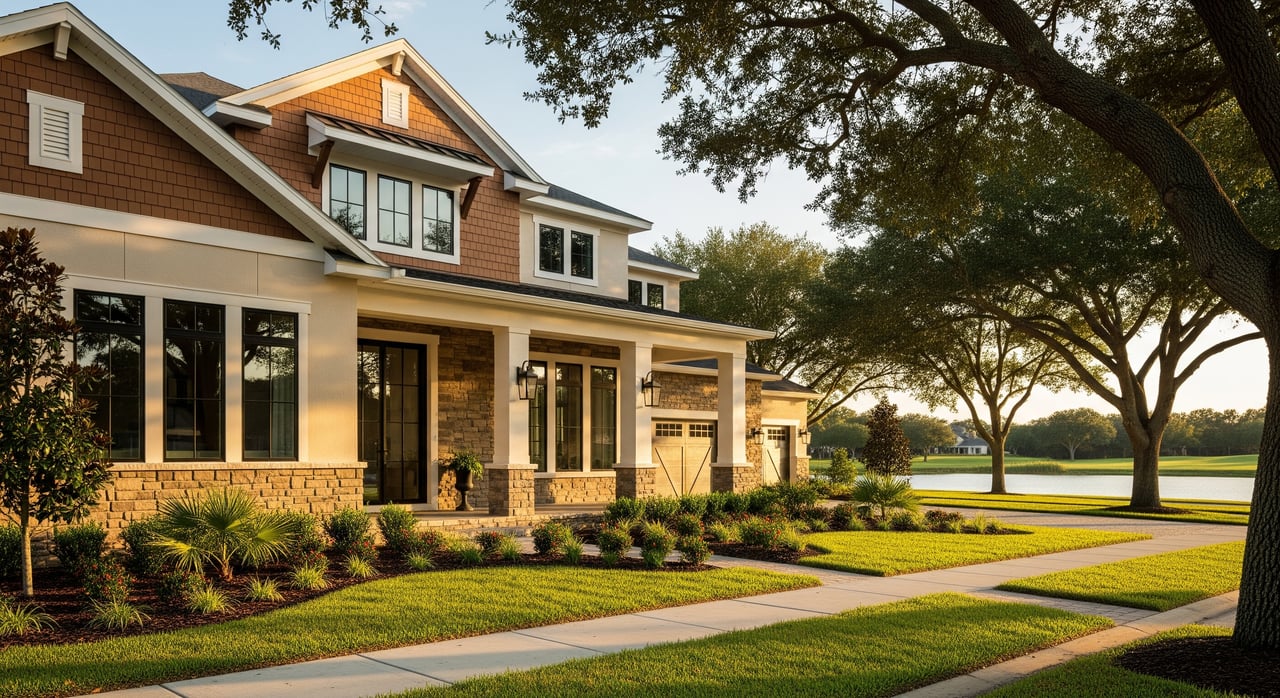The last thing any homeowner wants is to be in the path of a hurricane. Not only can these tropical cyclones cause fear for you and your family, but they can also wreak havoc on your home. In this post, you will see how to hurricane proof your home and here are 21 ways to do so.
What is a hurricane?
According to the National Oceanic and Atmospheric Administration (NOAA), a hurricane is a tropical cyclone. This rotating, low-pressure weather system has organized thunderstorms but “no fronts (a boundary separating two air masses of different densities).”
Along with high winds, hurricanes in Florida are often accompanied by debris and flooding.
How to Hurricane Proof Your Home
Protecting your family is of utmost importance, in addition to protecting one of your most valuable assets – your home. Read on to learn how to prepare a hurricane proof house and stay prepared when extreme weather comes your way – from impact-resistant glass to the value of an emergency kit.
1. Protect your windows.
Extreme winds, debris, and flooding can cause problems for your windows and even the window frame. Investing in storm shutters or impact-resistant windows before the storm can save you money in the long run. It’s unnecessary to keep protective window coverings in place all year round, but you can install tracts, fasteners, and connectors now that will help you put up the protection more quickly when a storm is approaching and time is of the essence.
Similar with garage doors, your windows are another place of vulnerability in your home. Florida building code requires homes located within 1 mile of the coast to have impact windows. Something to note is that while impact windows are not hurricane proof, they have been tested to withstand high hurricane winds impact. If you’re buying a new home or upgrading your current home, impact windows are the way to go.
2. Check your front door.
Just like windows, exterior doors can get hammered by high wind speed and flooding. Double doors and fiberglass doors are great options for protecting your home and often come with reinforcement options.
If need be, upgrade your windows and doors with new hurricane grade ones.
3. Upgrade your garage door.
Don’t forget this exterior door, as it is one of your most vulnerable areas in a hurricane. If a new garage door isn’t in the cards, that’s ok. Vertical and horizontal braces (or hurricane clips) can help support and protect your existing door in a hurricane and make sure no upsurge comes in through the garage door.
Reinforced garage doors, while heavier and stronger, are just as appealing as standard garage doors. These doors have extra layers of steel and also have a heavy-gauge track, unlike normal garage doors. Investing in hurricane resistant garage doors can mean a difference between minor and major repairs after a hurricane.
4. Consider your elevation.
Whether or not you’re in a flood plain, if you could be in the path of a hurricane in the future, now is a good time to elevate any electrical panels and systems that could be destroyed by water damage.
5. Seal entry points
Seal entry points, from roof vents to skylights and everything in between. A little caulking can add a measure of protection from water intrusion when a storm hits.
6. Clean your gutters and downspouts.
Broken or overfilled gutters can cause major problems when the flow of water turns heavy. With no clear path to take, and gutters full of leaves or dead branches, the water flow may become backed up or rerouted into your home.
7. Check your trees.
If you’ve been noticing dead branches or falling limbs, don’t wait until hurricane season to cut down these loose items. When picked up by hurricane-force winds, these objects can fly like bullets, causing damage to new and older homes alike.
8. Clean up the yard.
Just like number seven, don’t leave items in your yard that can become airborne in a hurricane. Take a look around and clean up any debris or old landscape tools and dead branches before a storm moves in.
9. Look for loose roof tiles or loose shingles.
It’s worth taking a tour around your home and reviewing for any signs of weakness. This also includes a visit to look at the trusses and rafters, if possible. While not the cheapest option, hurricane straps can be installed on various parts of your roof to strengthen it. A solid roof can offer great protection and during a storm, but any vulnerability can cause a problem.
10. If necessary, complete roof repairs.
Adding nails and/or roofing cement if needed is not worth putting off. Once you assess your roof or get a report from a qualified roofing expert, be sure to follow up as soon as possible. If you want to ensure you have the strongest roof possible, consider working with an IBHS Certified Engineer. Once you meet the requirements of this designation, you may have more peace of mind – and qualify for home insurance discounts.
11. Remove loose roof items.
That old tv antenna or spinning weather vane will be quickly ripped off when high winds come through, potentially leaving a hole and damage to all types of roof structures.
12. Bring furniture inside.
Patio furniture, lawn furniture, and decorative items are safer indoors. Bring these items in to avoid them flying around – causing damage to the items and your home.
13. Create room in your crawl space.
If you have a closet, crawl space, or another area that is safest in the case of extreme weather, be sure to inspect it before hurricane season and make sure there is room for you and your loved ones if you have to get inside during the weather event.
14. Check your homeowners insurance policy.
The first step is to review your flood coverage, followed by understanding your deductible. Knowing what type of insurance you have can help you follow the right steps following a storm and provide peace of mind that proper coverage is in place if you need it.
15. Get a battery backup. Oftentimes, it’s easier to sustain outside world chaos when normal day-to-day activities can continue. Losing electricity, access to water, and refrigeration (aka, your food) can add unnecessary stress when you already have enough challenges to tackle. If you decide to invest in a generator, don’t wait until hurricane season arrives. That’s often when they’re at the highest price and lowest inventory.
16. Take steps to prepare by stocking the essentials.
A hurricane survival kit can go a long way. While this isn’t technically a home item, it does impact the wellbeing of those living in it. Pick up a few basic supplies before you need them. If you’ve already grabbed these items in the past, be sure to pull them out each year and update any batteries or things that are past their expiration (like food or medication). The best items to include are candles and flashlights, in case of electricity loss, and a battery-powered radio to stay up to date on weather conditions. It’s also a good idea to keep some food that doesn’t require refrigeration, water, and a gas can with enough gas to get you to the store or family’s house if your local station closes down. This step is also applicable if you’re wondering how to hurricane proof your house, and some of the homeowner responsibilities don’t apply.
17. Don’t forget your pets.
While stocking up on basic supplies for your family, don’t forget to stock up on dog or cat food, litter, and necessary items to keep your four-legged family members safe and happy.
18. Inspect your sump pump
While most of us in Florida don’t have basements, some homes may include this level and an accompanying sump pump. Protect your home’s safety and avoid a storm surge causing flooding by inspecting your pump and securing a source of backup power in case of an outage.
19. Prepare a list of key contacts and phone numbers
Prepare a list of key contacts and phone numbers to keep handy in case of an internet outage. This may include close friends and family or emergency contacts like your insurance company and the Federal Emergency Management Agency (FEMA) line. Either way, have your list ready in case you don’t have access through your normal communication options.
20. Choose a trusted contractor
If you need help after a storm, choose a trusted contractor with a well-established reputation in your community. Some contractors show up after a storm and disappear just as fast, so do your research and choose someone that will be there with you throughout the repair.
21. Don’t panic.
This last tip is a good reminder that the most important thing in a storm is your safety and the safety of your family. With the right preparation, you can trust that you’ve done everything you can to prepare and weather the storm.









